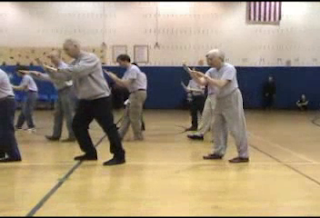Sharpened neuromuscular control
a video on learning Internal discipline
This bears repeating because my perspective as a teacher tells me, students, nowadays have to constantly be reminded. I explain my rationale below: In the video, Master Hwa says "14 years" went by under Young Wabu and Hwa says he "discovered" he has actually been doing "internal discipline" but it comes as a revelation. Now for students what amazes me, among other things, however, is how anyone views the footwork of this and still thinks the biomechanics are coming from the legs "pushing" off on the ground and not "pulling" from the front leg? Those "revelations" about internal are my experience with him as well although he told me I "got it" back in 2008 and I still make discoveries 18 years later now. What a treat to make these discoveries on my own. This is indeed evidence of sharpened neuromuscular control. I think these discoveries are hiding in plain sight just waiting for sharpened abilities to discern what body sensations mean. With such "internal discipline" this is indeed a moving QIGONG and IMHO undoubtedly the best Qigong I have ever done. Teachers did "Vette" students as he describes, good stuff, but nowadays students constantly question authority and don’t want to relinquish the opinions they bring to class. This is on the increase. Those opinions are what hold up learning and as soon as the student relinquishes...voila the learning begins. I am "old school" and still think "the ball is ultimately in the student's court" and I cannot teach anyone unless they are willing to be the student. What is also perplexing is how students think the nervous system can learn in a hurry and when they cannot, they say it is "not what they thought it was". My experience is the nervous system learns by discerning the difference between sensations and not from sensations that overwhelm...that takes time. Students develop the ability to tell the difference between one sensation and another; eg., the difference between holding hips still for "counter twist" and turning the waist. I have heard "teachers keeping secrets" for decades but the "I don't want your authority" attitude on the part of students is the convoluted modern-day version of teachers' “keeping secrets”. You hit the nail on the head here, Master Hwa thank you. All of that is my educated opinion garnered from studying with you and teaching modern-day students, but when I have had students who are ready they were really ready.





